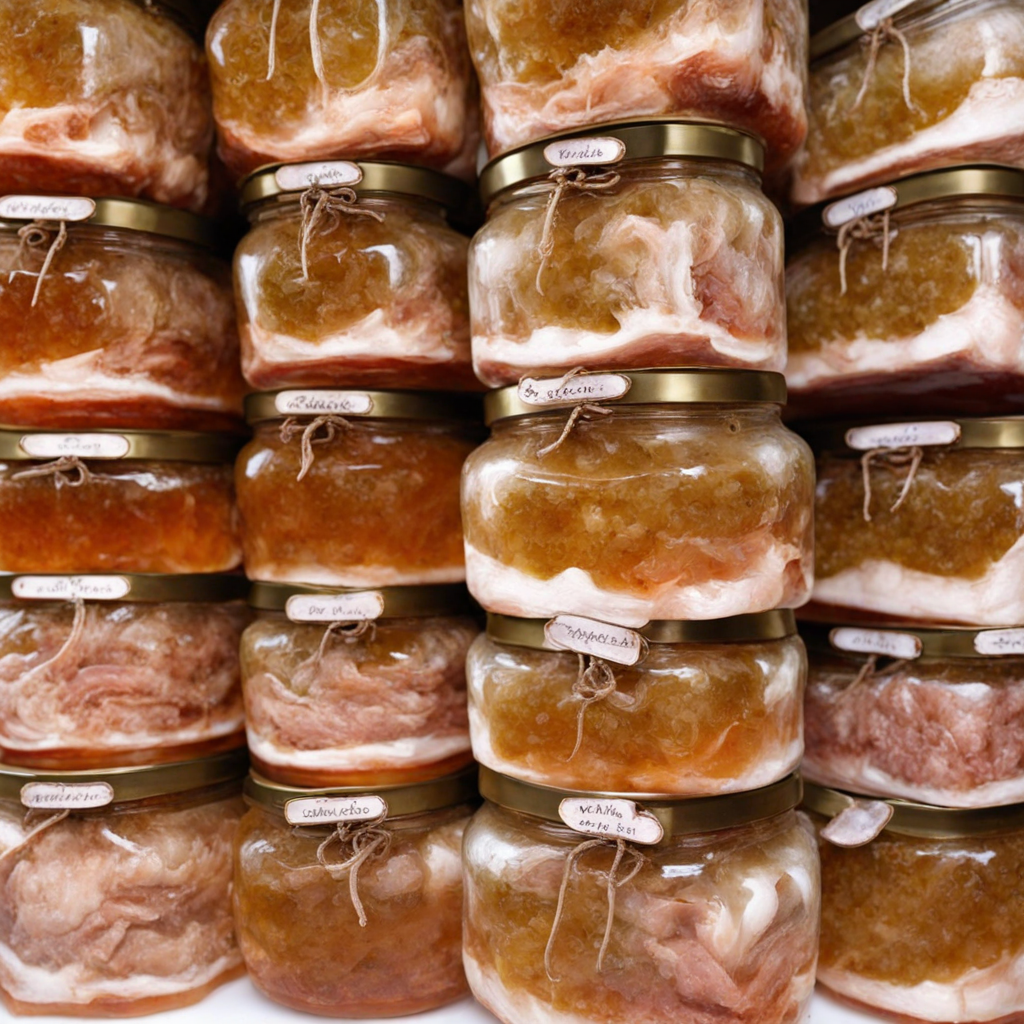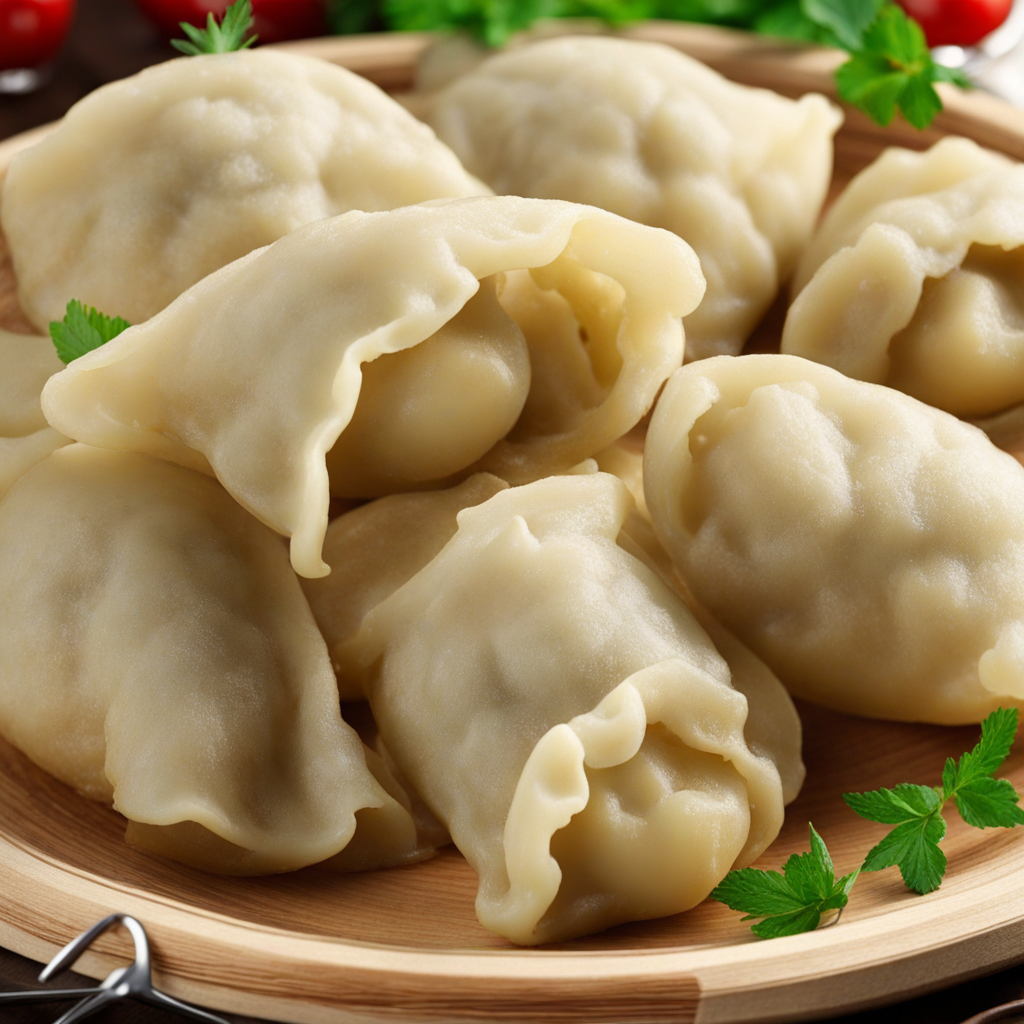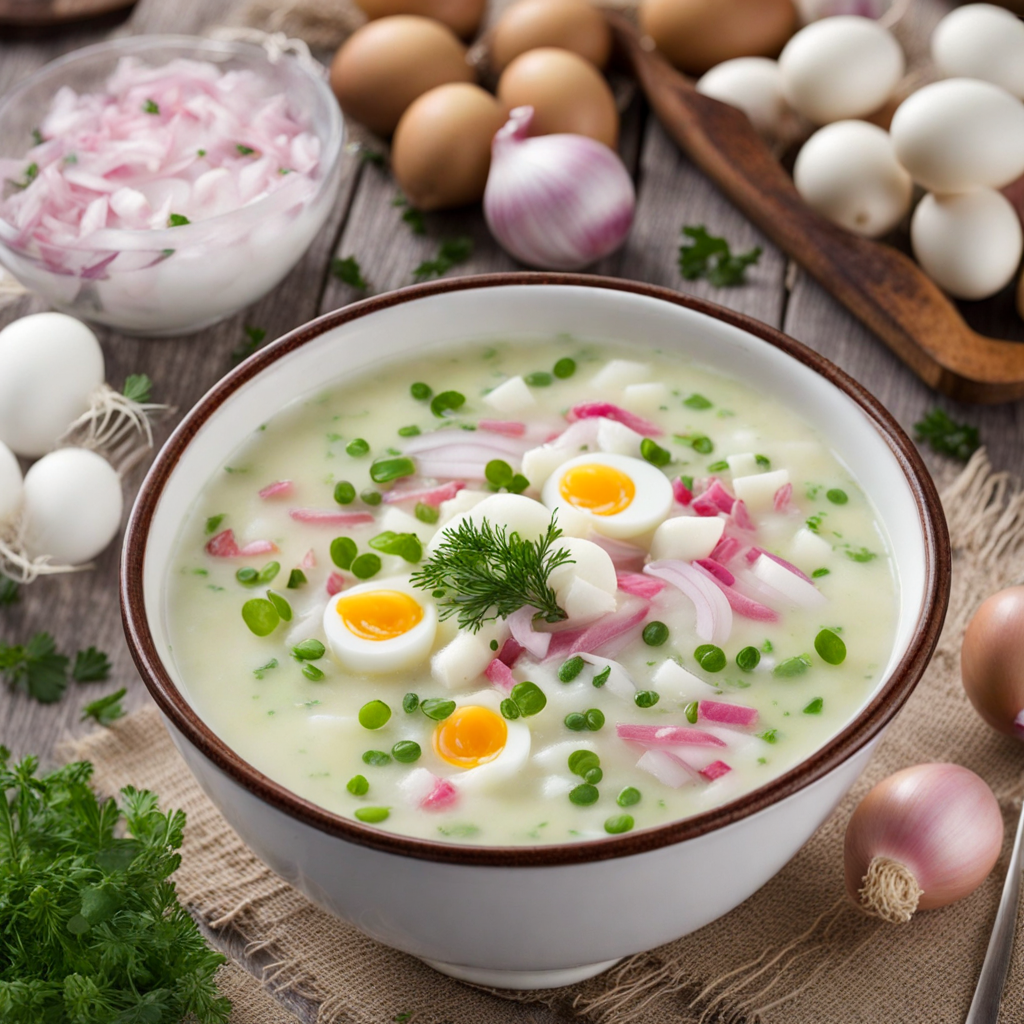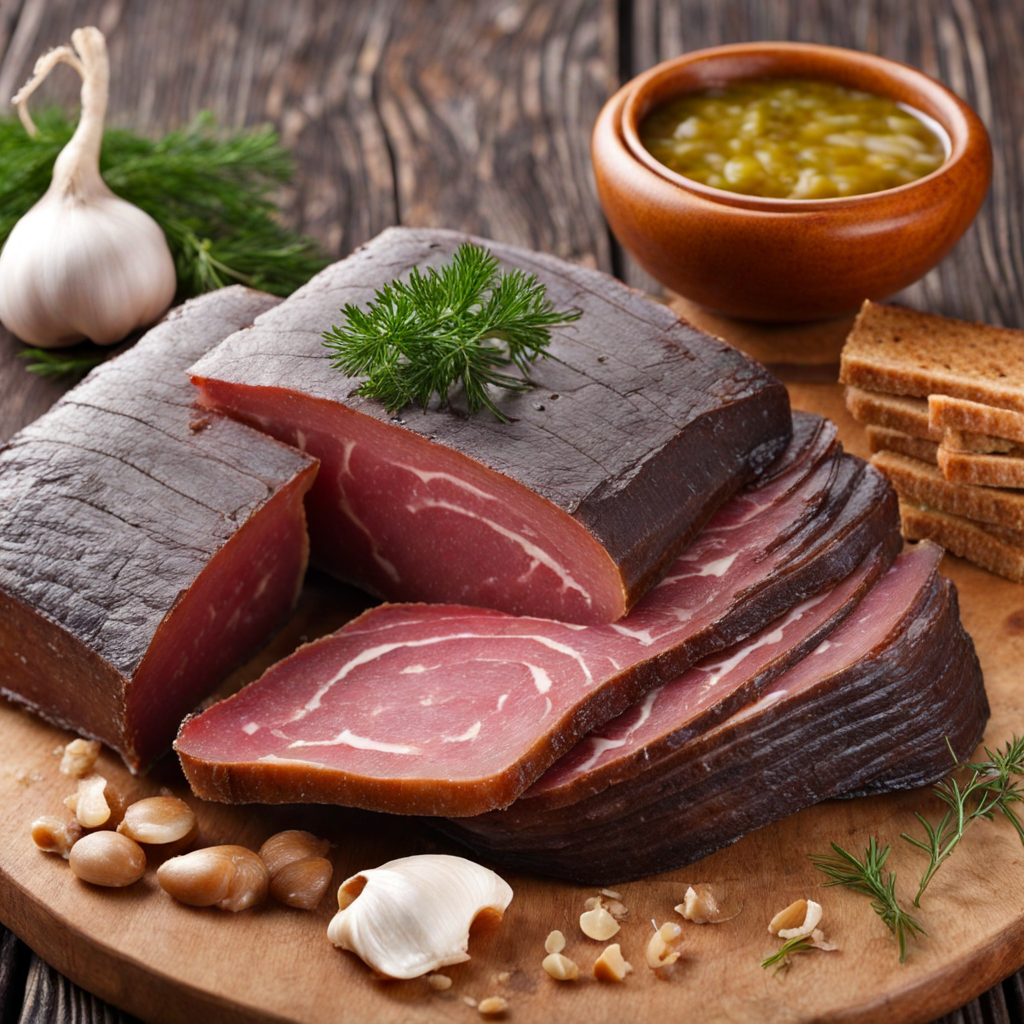Kholodets
Kholodets is a traditional Ukrainian dish that embodies the essence of rustic cooking with its unique texture and flavor profile. This savory jelly-like dish is primarily made from meat broth that has been simmered for hours to extract rich flavors and nutrients. The broth is then cooled until it solidifies into a gelatinous form, often decorated with pieces of meat, carrots, and sometimes even garlic or herbs. The visual appeal of Kholodets, with its translucent jelly showcasing the colorful ingredients, is as inviting as its taste. When served, Kholodets is usually sliced into squares or wedges, revealing the delightful layers of meat and vegetables within. The first bite offers a surprising contrast between the firm, yet tender, gelatin and the succulent morsels of meat, which may include pork, beef, or chicken. The flavor is savory, with a hint of umami that comes from the long cooking process, allowing the natural flavors of the ingredients to meld beautifully. It is often accompanied by a dollop of horseradish or mustard, which adds a zesty kick that elevates the dish even further. This dish is not just a meal but a celebration of Ukrainian culinary traditions, often enjoyed during festive occasions and family gatherings. Kholodets is best served cold, making it a refreshing appetizer or side dish, especially in warmer months. Its simplicity and hearty nature make it a comfort food that resonates with many, capturing the essence of home-cooked meals and the warmth of family gatherings. Whether you're discovering Ukrainian cuisine for the first time or revisiting familiar flavors, Kholodets promises to deliver an unforgettable taste experience.
How It Became This Dish
The History of Холодець: A Culinary Treasure of Ukraine Origins and Definition Холодець, pronounced "kholodets," is a traditional Ukrainian dish that epitomizes the rich culinary heritage of the country. Derived from the word "холод," meaning "cold," kholodets is a savory meat jelly, typically made from pork or beef, that is set into a gelatinous form. The dish is not only a testament to Ukrainian ingenuity in food preservation but also reflects the cultural tapestry that has woven together the diverse regions of Ukraine throughout history. The origins of kholodets can be traced back to the medieval period when preservation methods were crucial for survival. Before the advent of refrigeration, communities relied on natural methods to store food, particularly during the harsh winters. Meat, being a valuable source of protein, was often boiled down to create a broth, which would then be allowed to cool and set into a jelly-like consistency. This was not unique to Ukraine; variations of meat jelly can be found in many cultures, including aspic in France and gelatina in Italy. Cultural Significance Kholodets holds a significant place in Ukrainian culinary traditions, especially during festive occasions and family gatherings. It is often served as an appetizer during celebrations, including weddings, Christmas, and Easter. The dish is emblematic of Ukrainian hospitality, showcasing the effort and care taken to prepare food for loved ones and guests. The presentation of kholodets is an art form in itself. Traditionally, it is molded in decorative shapes, often garnished with fresh herbs, sliced vegetables, and accompanied by horseradish or mustard. The dish not only pleases the palate but also provides a visual feast, reflecting the importance of aesthetics in Ukrainian cuisine. Kholodets is also a nostalgic dish for many Ukrainians, symbolizing home and family. Its preparation often involves multiple generations, with older family members teaching younger ones the nuances of the recipe, thus passing down culinary traditions. This intergenerational connection reinforces the dish's cultural significance, linking past and present through shared culinary experiences. Development Over Time As Ukraine's historical landscape transformed through invasions, occupations, and political changes, so too did its culinary practices. The influence of various cultures, including Polish, Russian, and Jewish, has contributed to the evolution of kholodets. Each culture brought its own ingredients, spices, and techniques, enriching the dish and allowing it to adapt to regional tastes. In the 19th century, the popularity of kholodets surged, particularly among the aristocracy. It became a staple at lavish banquets and was often showcased in elaborate presentations. The rise of cookbooks and culinary literature during this period helped standardize recipes and techniques, ensuring that kholodets became a recognized dish in Ukrainian gastronomy. The Soviet era brought further changes to kholodets as it became a symbol of abundance and resourcefulness. In a time when ingredients were scarce, home cooks learned to innovate, using whatever meats and vegetables were available. Kholodets began to feature various combinations of meats, from traditional pork and beef to more modern interpretations that included chicken or even fish. This adaptability allowed kholodets to remain relevant, even as the socio-political landscape shifted. In contemporary Ukraine, kholodets has retained its status as a beloved dish. While traditional recipes continue to be cherished, modern chefs are experimenting with new flavors and presentations, incorporating elements from global cuisines. This evolution reflects a broader trend in Ukrainian cooking, where traditional dishes are revitalized while honoring their historical roots. Regional Variations One of the fascinating aspects of kholodets is its regional diversity within Ukraine. Different areas have their own unique takes on the dish, influenced by local ingredients and culinary traditions. In Western Ukraine, for example, kholodets might be enriched with mushrooms and spices, reflecting the region's abundant forests. Meanwhile, in Eastern Ukraine, it may be served with a side of pickled vegetables, emphasizing the balance of flavors. Additionally, the preparation of kholodets can vary significantly. In some families, the broth is made with bones to create a rich, gelatinous texture, while others might use more modern methods, like gelatin packets, to achieve the same result. These variations not only enhance the dish's flavor but also add to its cultural narrative, showcasing the creativity and adaptability of Ukrainian cooks. Modern Day and Global Influence Today, kholodets is not just confined to Ukraine; it has found a place in the hearts and kitchens of the Ukrainian diaspora around the world. Ukrainian immigrants have brought this cherished dish to countries like Canada, the United States, and Poland, where it has become a symbol of cultural identity and heritage. In these communities, kholodets is often prepared during holidays and family gatherings, serving as a reminder of home and tradition. Social media has also played a significant role in the resurgence of interest in traditional Ukrainian dishes, including kholodets. Food bloggers and culinary enthusiasts are sharing recipes, videos, and personal stories related to the dish, helping to educate a new generation about its significance. This digital revival has sparked a renewed appreciation for kholodets, encouraging younger Ukrainians to embrace their culinary heritage. In conclusion, kholodets is more than just a dish; it is a cultural artifact that encapsulates the history, traditions, and resilience of the Ukrainian people. From its humble beginnings as a means of food preservation to its status as a festive delicacy, kholodets has adapted and evolved over centuries, reflecting the changing tastes and influences of Ukrainian cuisine. As it continues to be enjoyed both in Ukraine and around the world, kholodets remains a delicious symbol of home, family, and cultural pride.
You may like
Discover local flavors from Ukraine







